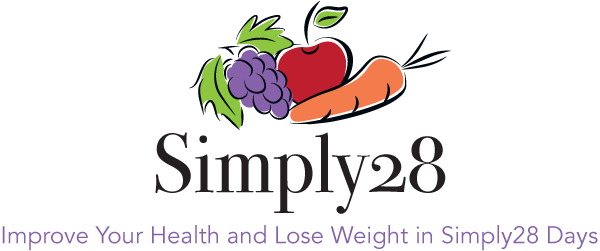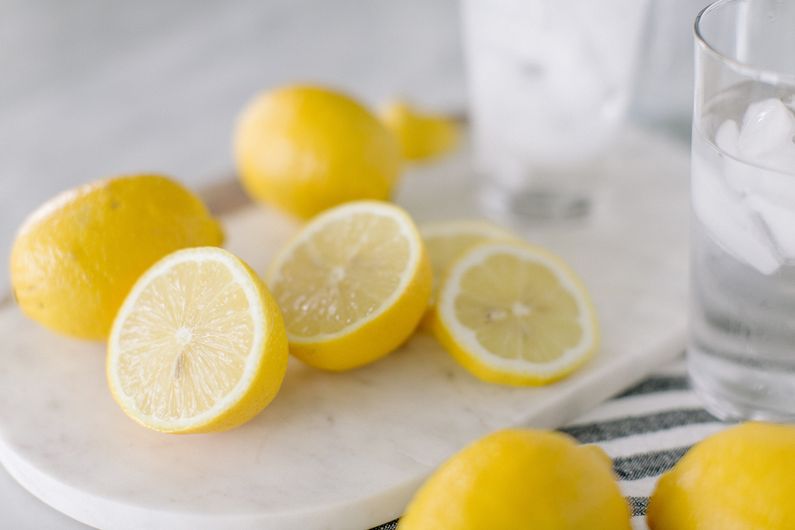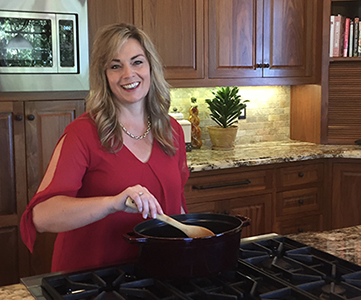Ok, so it’s a little corny but I like corny! And every time I think about hydration I can’t get the Beach Boy’s lyrics out of my head! “Good, Good, Good, Good Vibrations”
So let’s talk about one of the most important things we all need for good health and that is of course….. Good Hydration!
Click for your FREE 28 Day Total Body Workout
When we typically think about nutrients we can break them down into two categories; micronutrients including vitamins and minerals that are needed by the body in small amounts and macronutrients which include the building blocks of food – protein, fat and carbohydrates. But there is one more very important nutrient that we don’t often think of and that is water.
Water is the most important nutrient in the body. The human body can survive up to 8 weeks without food but in can only survive a few days without water. Water makes up nearly 60% of our total body mass. This equates to 10 to 13 gallons of water for the average adult human. Every part of the body contains water even our bones!
Water has many important roles that are essential for good health and survival
Delivers Nutrients and Removes Toxins – It improves cellular hydration and the delivery of oxygen and nutrients to our cells and transports waste and toxins out of them.
Anti-Aging – Water is the fountain of youth. Think of the difference between a grape and a raisin. The raisin has lost most of its water and has shriveled up becoming smaller, wrinkled and is a bit tough. While the well hydrated grape is juicy, plump and has a smooth outer layer. Cells react in a similar manner when dehydrated. They shrivel up and begin to look old and worn out. Water provides an anti-aging affect as it plumps not only our internal cells but also our skin cells giving us soft, smoother skin and helping us look younger!
Nature’s Shock Absorber – Water cushions joints bones and organs such our liver and intestines protecting us from jarring movements such as running or jumping. It lubricates our joints and prevents tissue from sticking together.
Breathe Easy – Water moistens the air that we breathe allowing us to breathe more easily. Difficulty breathing is most noticeable in dryer climates or high elevation. In these areas, drinking plenty of water is essential. You might also try using a humidifier at home to moisten the air that you are breathing.
Sweat It Out – Water helps to regulate body temperature when we sweat to help us cool down.
Detox – Toxins and waste are removed from our cells and carried to the liver where they can be processed for removal from the body either in our urine or our poop!
Communication – Our body is a high-tech communication freeway. Every function from digestion to brain power is guided by the production of hormones that communicate to the organs what needs to happen next. Water facilitates the proper firing of organ cells and other tissues, improving the cell to cell communication and delivering the right message.
Empowers Healing – When injury occurs, water rushes to the affected area to cushion and protect it. Additional oxygen and nutrients are brought to the area to begin a rapid healing process.
Lowers Blood Pressure – In some cases, water can even lower blood pressure by increasing blood volume and expanding the vascular system creating less pressure within the circulatory system.
Water is an essential nutrient. The body can generate only about 8% of the water it needs to survive. The other 92% must be ingested through food and beverages. Our bodies lose water through our skin by sweating and to help keep our skin moist. It loses it through breathing when we exhale, through our intestines during digestion and of course through our kidneys. Water is constantly being excreted from our bodies meaning that we need a consistent supply to replenish it.
So, how do you know if you are getting enough water?
As little as a 2% drop in the water content can leave you feeling tired, sluggish and overall fatigued. These are some of the early signs of dehydration in addition to anxiety, irritability, cravings, cramps, headaches and depression.
But what about more severe hydration? If a body is more seriously dehydrated, with a drop of up to 10% volume, it can experience symptoms such as:
- Heartburn
- Joint & Back Pain
- Migraines
- Impaired Immune System
- Constipation
- Colitis
- Fibromyalgia (a contributing factor)
- Increased Blood Pressure
A drop of 10% can cause harm to the digestive system, the heart, and to the musculoskeletal system. A loss of greater than 10% can result in death.
Well, that was a little heavy so let’s lighten it up with the good news!
Most symptoms can be relieved in just a few days if H2O stores are replenished. It’s easy, it doesn’t take any special tools except a cup or water bottle and anyone can do it in 3 easy steps.
Step 1 – Calculate your body’s needs.
Use this simple equation to calculate how much water your body needs.
Your weight (in lbs.) ÷ 2 = # of ounces to consume
For example, a person weighing 160 lbs. would divide 160 by 2 which equals 80 ounces of water (10 eight ounce cups) each day up to a max of 100 ounces.
160 ÷ 2 = 80 ounces
If you are extremely active and losing a water through sweat or you live in a very dry climate, you should also add some electrolytes such as sea salt and a squeeze of lemon or try one of my hydrating drinks such as Citrus Splash Electrolyte Drink. Electrolytes including salt, potassium and other minerals, help the cells to absorb water rather than passing through the body too quickly. Salty bone broth is also a good option.
Step 2 – Make a Plan.
To help you get off to a good start, always drink 8 ounces or more when you first get up in the morning before having coffee or starting your day. It also helps to get a 24 ounce water bottle and setting a goal to drink 2 bottles by lunch and then another 1 or 2 in the afternoon.
If getting your quota of water down is challenging at first, start by adding just 2 extra cups for a day or two and then add 2 more cups every few days until you get to your daily intake goal.
Step 3 – Reduce or eliminate caffeine, sodas, alcohol and fruit juices.
Most Americans only drink 4 to 6 cups of water daily even though we have access to some of the cleanest and most abundant water in the world. Instead we often drink beverages with caffeine, sugar, high fructose corn syrup, artificial sweeteners and alcohol. These drinks are in fact diuretic and dehydrate us rather than replenishing our stores. If you choose to drink these beverages you will need to add extra water to balance out the dehydration affects.
For every cup of coffee, soda or alcohol you drink, you will need to drink an additional 1 to 1 ½ cups of water.
Did you know: Soda contains phosphoric acid which slows the production of digestive HCl
and blocks calcium absorption for several hours after being ingested?
Water should always be your primary drink of choice. Add a squeeze of citrus like lemon, lime or orange to jazz it up. Bone broth and herbal tea without caffeine are also good sources that count toward your daily quota.
Stay well my friend, keep hydrated and click the link below for your total body workout!
The 28 Day Total Body Workout




Hello simply28.com webmaster, Your posts are always well-structured and logical.
A lot of thanks for all your efforts on this web page. My mom loves setting aside time for internet research and it’s easy to see why. Most of us hear all about the lively tactic you offer powerful steps by means of this web blog and even welcome contribution from website visitors on the topic then our favorite simple princess is certainly becoming educated a lot. Take advantage of the rest of the year. You are always doing a very good job.
very good submit, i certainly love this web site, carry on it
Hello. Great job. I did not expect this. This is a fantastic story. Thanks!
Some really rattling work on behalf of the owner of this internet site, dead great subject matter.
Thanks for every one of your efforts on this website. Kim really likes participating in investigations and it’s simple to grasp why. My partner and i know all regarding the lively medium you produce valuable guidance on this website and attract participation from website visitors on this area then our own child is certainly learning a whole lot. Take advantage of the rest of the year. You have been performing a stunning job.
Say, you got a nice blog post. Want more.
I like what you guys are up also. Such smart work and reporting! Carry on the superb works guys I have incorporated you guys to my blogroll. I think it will improve the value of my website :).
Some genuinely great information, Gladiola I noticed this. “I have hardly ever known a mathematician who was capable of reasoning.” by Plato.
I regard something truly special in this web site.
Good V I should certainly pronounce, impressed with your web site. I had no trouble navigating through all tabs as well as related information ended up being truly simple to do to access. I recently found what I hoped for before you know it at all. Quite unusual. Is likely to appreciate it for those who add forums or anything, website theme . a tones way for your client to communicate. Excellent task..
The rise of digital learning platforms has revolutionized the way students access and engage with educational content.
I am not sure where you’re getting your information, but good topic. I needs to spend some time learning much more or understanding more. Thanks for wonderful info I was looking for this info for my mission.
I am so happy to read this. This is the kind of manual that needs to be given and not the accidental misinformation that is at the other blogs. Appreciate your sharing this best doc.
As soon as I detected this website I went on reddit to share some of the love with them.
Fascinating blog! Is your theme custom made or did you download it from somewhere? A design like yours with a few simple adjustements would really make my blog shine. Please let me know where you got your design. Kudos
You really make it appear really easy along with your presentation however I find this matter to be actually something which I believe I might by no means understand. It sort of feels too complex and extremely large for me. I’m having a look ahead on your next publish, I?¦ll attempt to get the cling of it!
Hello there! This is my 1st comment here so I just wanted to give a quick shout out and tell you I truly enjoy reading through your blog posts. Can you recommend any other blogs/websites/forums that go over the same subjects? Thank you so much!
Exactly what I was searching for, thanks for putting up.
Enjoyed examining this, very good stuff, thanks.
My brother suggested I might like this blog. He was totally right. This post actually made my day. You cann’t imagine just how much time I had spent for this information! Thanks!
Magnificent website. Lots of useful info here. I’m sending it to several friends ans also sharing in delicious. And naturally, thanks for your sweat!